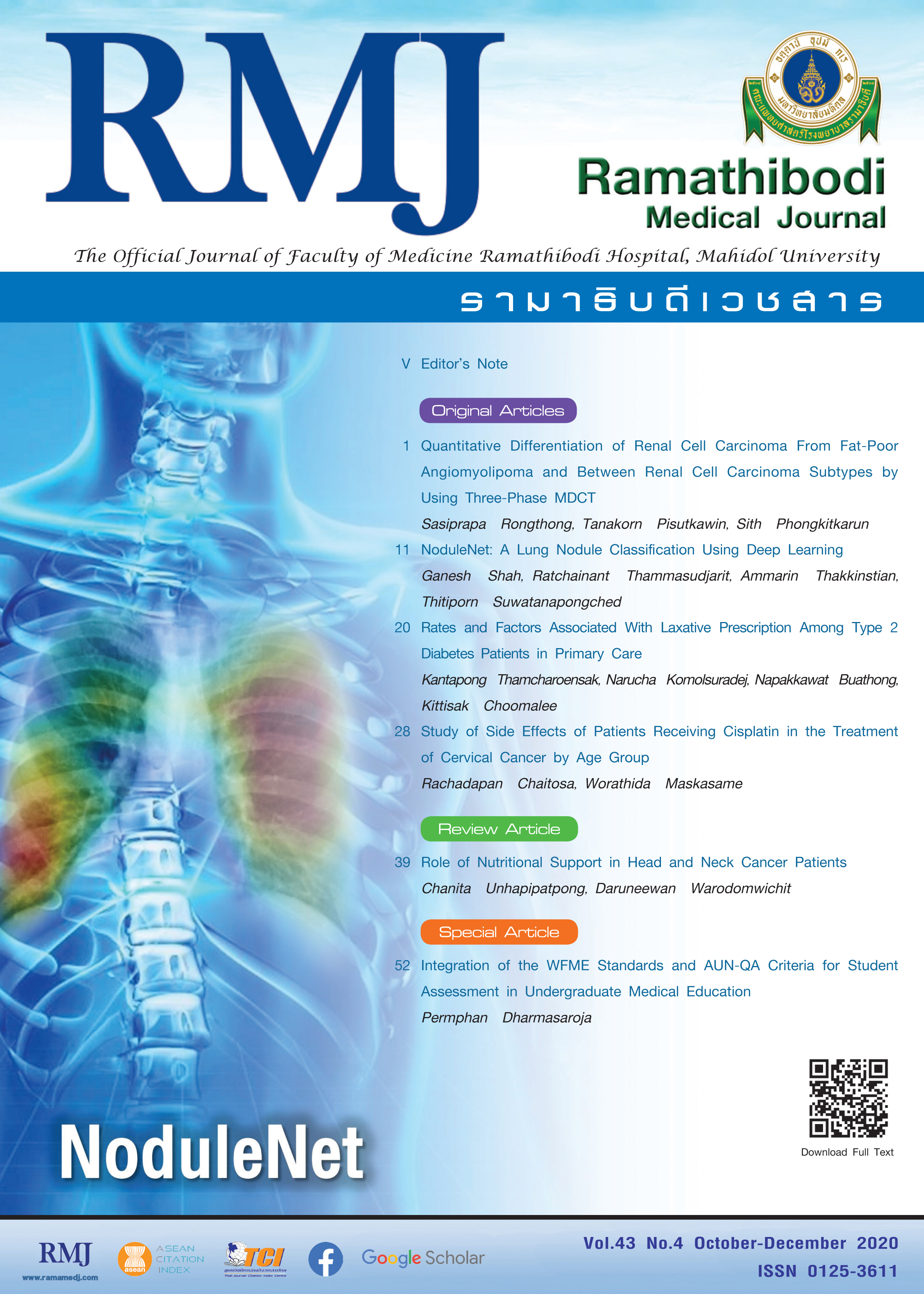Integration of the WFME Standards and AUN-QA Criteria for Student Assessment in Undergraduate Medical Education
DOI:
https://doi.org/10.33165/rmj.2020.43.4.240075Keywords:
WFME, AUN-QA, Quality assurance, Assessment, Medical education, Quality learningAbstract
Quality assurance (QA) is a broad-based activity, which encompasses both quality management and quality control, and requires all the policies, standards, systems and processes in place to maintain and improve medical education quality. QA can be managed through an institutional monitoring that should include the evaluation of teaching and learning approaches, and the assessment. Accreditation standards by international agencies such as the World Federation for Medical Education (WFME) are to be followed for an external quality assurance. In addition, the ASEAN University Network-Quality Assurance (AUN-QA) is the assessment criteria for promoting QA in higher educational programs in ASEAN countries. Both WFME and AUN-QA require that teaching and learning approaches and assessment methods be aligned to the program learning outcomes. The purpose of this review is to compare the WFME standards and the AUN-QA criteria on teaching and learning approaches and methods of assessment to encourage the integration of these two QA systems for undergraduate medical education.
References
Sjöström H, Christensen L, Nystrup J, Karle H. Quality assurance of medical education: lessons learned from use and analysis of the WFME global standards. Med Teach. 2019;41(6):650-655. doi:10.1080/0142159X.2018.1536259.
Van Der Vleuten CPM, Schuwirth LWT, Driessen EW, Govaerts MJB, Heeneman S. Twelve Tips for programmatic assessment. Med Teach. 2015;37(7):641-646. doi:10.3109/0142159X.2014.973388.
Biggs J. Teaching for Quality Learning at University: What the Student Does. 2nd ed. Buckingham, UK: SRHE and Open University Press; 2003.
World Federation for Medical Education. Basic Medical Education. WFME Global Standards for Quality Improvement. https://wfme.org/download/wfme-global-standards-for-quality-improvement-bme/?wpdmdl=831&refresh=5e5f666d3f21e1583310445. Published January 1, 2015. Accessed February 11, 2020.
Thawesaengskulthai D. Comparative QA system of HE in Thailand, ASEAN and European Countries. QA NEWS. 2005;104. http://www.qa.kmutnb.ac.th/qa_news/2548/QANEWS104_25480915.pdf. Accessed February 11, 2020.
ASEAN University Network. Guide to AUN-QA Assessment at Programme Level Version 3.0. http://www.aun-qa.org/views/front/pdf/publication/Guide%20to%20AUN-QA%20Assessment%20at%20Programme%20Level%20Version%203_2015.pdf. Published October 2015. Accessed January 31, 2020.
Mattick K, Knight L. High-quality learning: harder to achieve than we think? Med Educ. 2007;41(7):638-644. doi:10.1111/j.1365-2923.2007.02783.x.
Beyerlein SW, Holmes C, Apple DK. Faculty Guidebook: A Comprehensive Tool for Improving Faculty Performance. 4th ed. Lisle, IL: Pacific Crest; 2007.
Ramamurthy S, Er HM, Devi Nadarajah V, Radhakrishnan AK. Medical students’ orientation toward lifelong learning in an outcome-based curriculum and the lessons learnt. Med Teach. 2019;1-6. doi:10.1080/0142159X.2019.1646894.

















